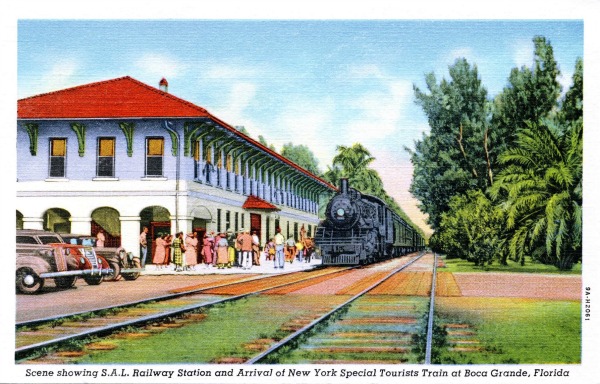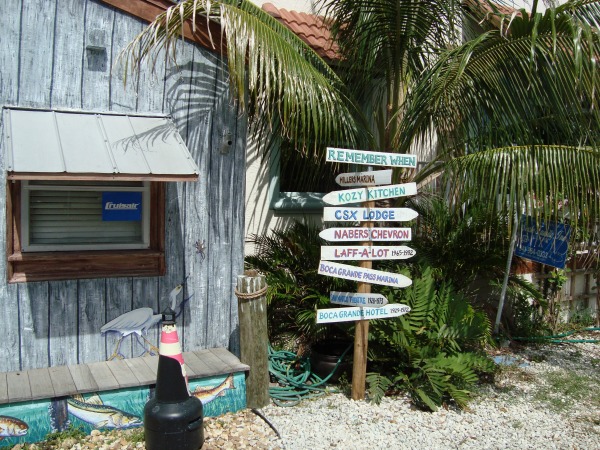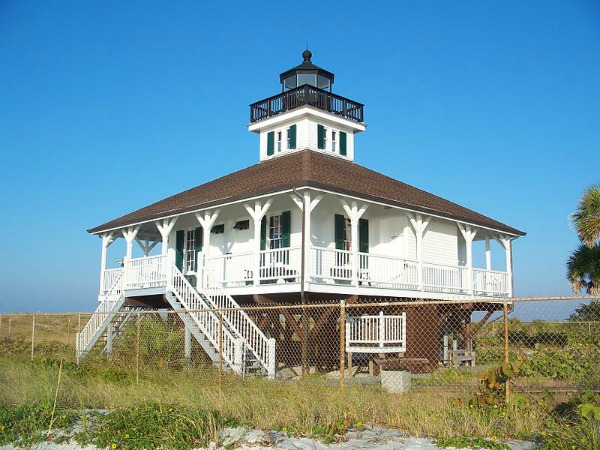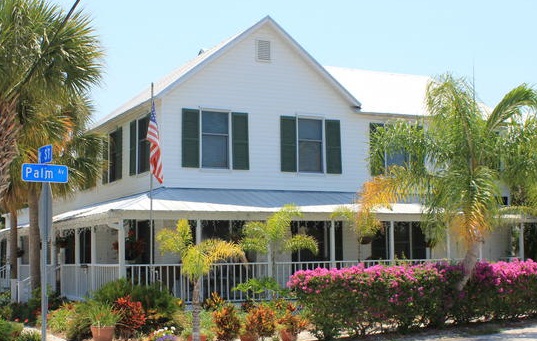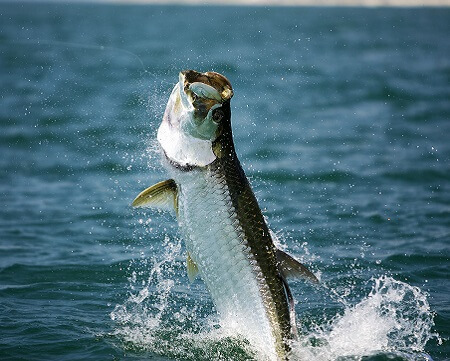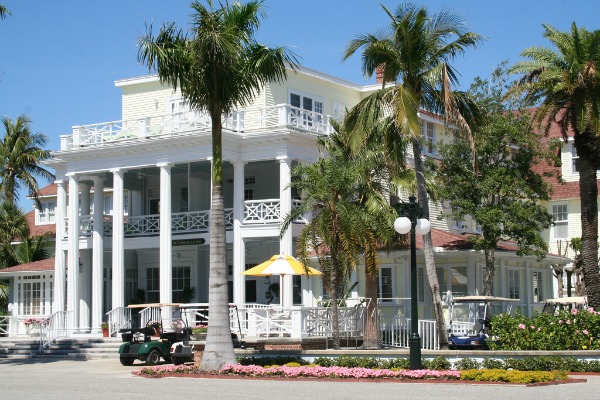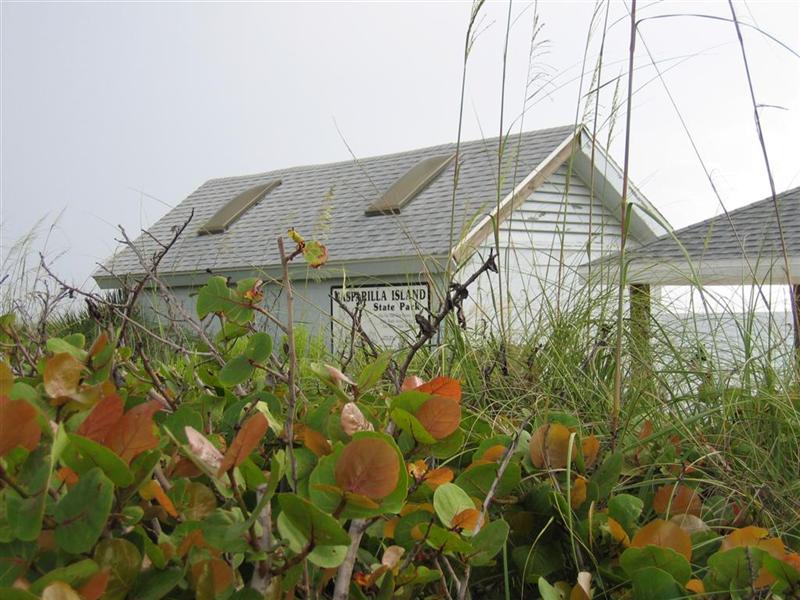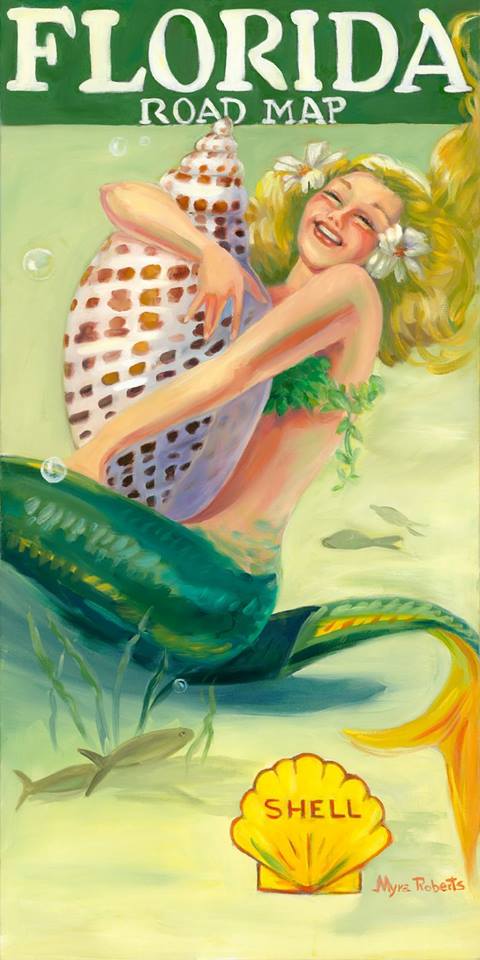- Home
- Florida Towns
- Boca Grande
BOCA GRANDE, FLORIDA
By Mike Miller Updated May 27, 2025
Boca Grande, Florida Things To Do, Lodging, Dining, & Real Estate At End Of Article
Boca Grande is a village in Southwest Florida that most Floridians have never visited.
The small town is at the end of the road, just like Key West and Cedar Key, but far less known.
It has some of the same quirkiness and bohemian nature that is typical of Key West and other Florida end of the road towns.
Boca Grande is at the southern end of State Road 771. You need to find your way to Placida, Florida by taking State Road 776 from Port Charlotte or State Road 775 from Englewood.
The roads intersect at Placida.
A toll bridge takes you from Placida to Gasparilla Island and Boca Grande on SR-771. Pay the $6 round trip toll and go into an interesting and charming part of Old Florida on the Gulf of Mexico.
Boca Grande makes a great day tip from Fort Myers, Englewood, Punta Gorda, and Port Charlotte.
BOCA GRANDE'S HISTORY
Boca Grande is on Gasparilla Island. Part of the community is in Charlotte County and part is in Lee County.
Gasparilla was the nickname of Jose Gaspar, the “last of the buccaneers”, a famous pirate. Jose may have been fictitious. Nobody knows for sure.
There are many versions of who he was and what he did. Real or not, he is the inspiration for Tampa's annual Gasparilla Festival.
The first residents in the area were Calusa Indians, who lived on nearby Useppa Island as long ago as 5,000 B.C. and on Gasparilla Island by 800 or 900 A.D.
Charlotte Harbor was the center of the Calusa Empire, a hunting and fishing tribe which numbered thousands of people and hundreds of fishing villages.
The first contact the Calusa had with the white man came during Spanish explorations at the beginning of the 16th century.
By the mid 1700s the Calusa had all but disappeared, the victims of European diseases, slavery and warfare.
Just like the Indians, the earliest settlers came to Gasparilla Island to fish. By the late 1870s several fish ranches were operating in the Charlotte Harbor area.
One of them was at the north end of Gasparilla Island in the small village called Gasparilla.
The fishermen, many of them Spanish or Cuban, caught huge numbers of mullet and other fish and salted them down for shipment to Havana and other markets.
In the 1940s the Gasparilla Fishery was moved to Placida across the bay, where it still stands today, and the fishing village died out.
Many of the early fishing families of Boca Grande Florida are represented in third, fourth and even fifth generation descendants who still live in the area.
TARPON MADE BOCA GRANDE, FLORIDA FAMOUS
PHOSPHATE MADE BOCA GRANDE, FLORIDA PROSPEROUS
In 1885 phosphate rock was discovered on the banks of the Peace River just north of Punta Gorda on the east side of Charlotte Harbor.
Phosphate was a valuable mineral for fertilizers and many other products, and was in great demand worldwide.
This discovery transformed the southern tip of Gasparilla Island into a major deep water port because Boca Grande Pass is one of the deepest natural inlets in Florida.
Barges loaded with phosphate came down the Peace River and Charlotte Harbor to Port Boca Grande. There the rock was loaded onto ocean going freighters.
Wealthy sportsmen also discovered the Charlotte Harbor area for its fantastic fishing and hunting. It became famous as a great place to catch tarpon, a fighting game fish.
Boca Grande became known as "the tarpon Capital of the World."
In 1905 the phosphate producers decided to build a railroad to Port Boca Grande. Phosphate would come by rail rather than barge.
The only buildings on south Gasparilla Island at this time were the lighthouse and house at the southern tip of the island.
By 1907 the railroad was completed along with a 1,000 foot long pier at the railroad terminus. From the early 1900s and for the next 60 years The Charlotte Harbor and Northern Railroad carried phosphate to Port Boca Grande.
BY 1969 PORT BOCA GRANDE WAS 4TH BUSIEST IN FLORIDA
The trains were off-loaded directly onto ocean going freighters for delivery to ports all over the world.
The railroad connected Boca Grande Florida to the world. The Charlotte Harbor and Northern Railroad not only brought phosphate and supplies to Gasparilla Island; it also brought wealthy people from the north.
By 1910 Boca Grande Pass was already famous for its unequaled tarpon fishing among fishermen, who stayed on nearby Useppa Island.
The Agrico Company, having begun to see the potential of the idea of developing Gasparilla Island beyond the port, began to develop the village of Boca Grande Florida.
The railroad station in what would become downtown Boca Grande was built. The company also built streets, sidewalks, streetlights, shops, a post office, and water and telephone service.
The town was landscaped, including the famous section of Second Street called Banyan Street.
The railroad company built several cottages downtown and a few wealthy families from "up north" purchased land and built winter residences.
The train stopped at Gasparilla, the fishing village at the north end of the island, at the railroad depot in downtown Boca Grande, and at the south end phosphate terminal.
In 1929 the Boca Grande Hotel was built just south of downtown Boca Grande. It was a three-story, brick resort hotel where most of the island weathered the hurricane of 1944.
BOCA GRANDE, FLORIDA TODAY
The Boca Grande Hotel changed hands and was demolished in 1975. It took six months to raze the building by means of fire and the
wrecking ball, as it had been built to withstand fire and hurricanes.
The railroad continued to bring the grand visitors from all along the eastern seaboard until the Boca Grande Causeway opened in 1958.
In the 1970s phosphate companies increasingly switched their interest to ports in Tampa and Manatee County.
As more money was put into developing these ports, traffic into Port Boca Grande began to dwindle.
The railroad continued to run work trains to the south end until the phosphate port closed in 1979.
The depot was restored and a number of shops, offices and a restaurant now occupy the old building.
The Gasparilla Island Conservation and Improvement Association transformed the old bed of the railroad into Boca Grande's popular bike path used by cyclists, walkers, and golf carts.
Boca Grande Florida has become a unique community, with a large number of wealthy winter residents rubbing elbows with the fishermen and other locals.
Tarpon tournaments are held in Boca Grande, and there are many charter fishing boats with knowledgeable captains.
Former President George H. W. Bush is one of many famous people who have spent winters at the Gasparilla Inn.
Locals remember President Bush's wife Barbara and dog Millie, and their spirited grand-daughters Jenna and Barbara.
Britt Hume of FOX News vacations in Boca Grande.
THINGS TO DO IN BOCA GRANDE, FLORIDA
Boca Grande Lighthouse and Museum
880 Belcher Rd, Boca Grande, FL 33921.
This iconic Gasparilla Island lighthouse and museum offers a glimpse into the island's history and maritime heritage, set against the backdrop of beautiful beaches on the south end of the island.
Gasparilla Island State Park
880 Belcher Rd, Boca Grande, FL 33921.
The park is renowned for its pristine beaches and old Florida charm, making it an ideal spot for sunbathing, fishing, and shelling on the beautiful white sand beaches.
Banyan Street
Boca Grande, FL 33921
Banyan Street is a picturesque drive lined with century-old banyan trees. It's a tranquil and scenic place for a leisurely walk or photography.
Boca Grande Bike Trail
Stretching throughout the island.
This 6.5-mile pathway offers visitors a chance to explore the island's beauty on two wheels, passing through historic sites, shopping districts, and natural scenery.
Boca Grande Marina
220 Harbor Dr, Boca Grande, FL 33921.
A hub for boating enthusiasts, the marina offers charters for fishing, sightseeing, and even sunset cruises. Fishing guides are available at all Boca Grande marinas.
Boca Grande Historical Society
170 Park Ave, Boca Grande, FL 33921.
Dive deep into the history and culture of the island with exhibits, photographs, and artifacts that narrate its rich past.
Boca Grande Art Center
236 Banyan St, Boca Grande, FL 33921.
A cultural gem of the island, the center features exhibitions, workshops, and classes that celebrate local and international artists.
Downtown Boca Grande
Along Park Avenue and nearby streets.
It's a delightful area brimming with boutique shops, eateries, and quaint architecture, making it ideal for shopping and strolling or renting a golf cart.
Whidden's Marina
190 1st St. E, Boca Grande, FL 33921.
This historic marina was added to the National Register of Historic Places in 2000. It was founded in 1926 and has been run by the Whidden family from the beginning.
Gasparilla Inn & Club
451 Gilchrist Ave, Boca Grande, Florida 33921.
This is one of the most historic hotels in the United States and has been a premier destination on Florida's Gulf Coast since 1913. It is on the National Register of Historic Places. Stay in one of the beautiful rooms in the main hotel during season, or in a guest cottage during the summer months.
BOCA GRANDE, FLORIDA RESTAURANTS
- Eagle Grille & Miller's Dockside, 220 Harbor Drive, Boca Grande, Florida 33921. 941-964-8000. Tasty dining overlooking Boca Grande Marina. The Grille's main dining room and screened porches have great views of the marina, bayou and Charlotte Harbor.
- Loose Caboose, 433 W. Fourth Street, Boca Grande, Florida 33921. 941-964-0440. The Loose Caboose is located in the historic train depot in downtown Boca Grande. They serve fresh local fish and produce in a comfortable, family atmosphere. A large patio area for outside dining lets you watch the world go by. Interior dining room is air conditioned.
- Pink Elephant Restaurant, 5th & Bayou Avenue, Boca Grande, Florida 33921. Boca Grande, FL 33921. 941-964-0100. This is a fine restaurant associated with The Gasparilla Inn and Club. It is a short walk from the inn. This popular restaurant is open Tuesdays through Sundays. Collared shirts and slacks are required upstairs, but less formal island casual wear is acceptable downstairs.
- Temptation, 350 Park Avenue, Boca Grande, Florida 33921. 941-964-2610. This fine restaurant reminds me of some of the places in the Florida Keys. Good food and service, ranked tops in Boca Grande by TripAdvisor.com.
ALL ABOUT BOCA GRANDE, FLORIDA
BOCA GRANDE INTERACTIVE MAP

Florida is the fastest-growing state in the United States and also the fastest-changing. If you see anything in this article that has changed or is in error, please let me know.
Thousands of Florida fans subscribe to our free daily Ezine, Florida Heritage Travel and we have 130,000 followers on Facebook.
By Mike Miller, Copyright 2009-2025
Florida-Back-Roads-Travel.com
Florida Back Roads Travel is not affiliated with or endorsed by Backroads, a California-based tour operator which arranges and conducts travel programs throughout the world.
